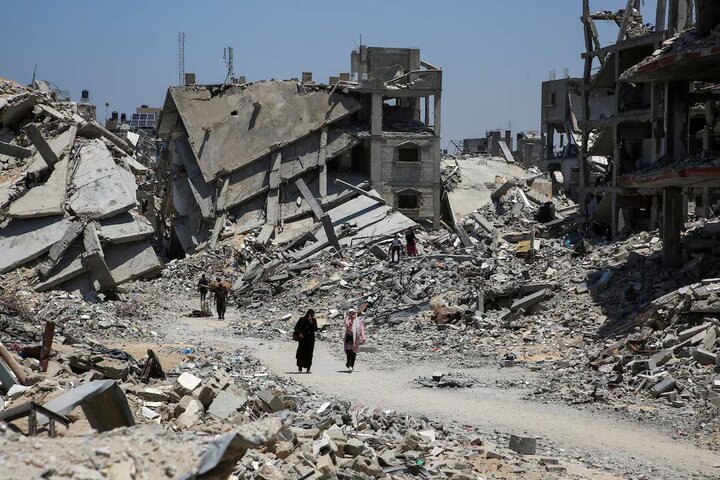US and Israeli mines on the path to Gaza reconstruction.
According to Al-Arabi Al-Jadeed, the reconstruction of the Gaza Strip is one of the most important issues that emerged after the ceasefire agreement, which, of course, faces numerous challenges.
The high cost of rebuilding the Gaza Strip
Since the Gaza Strip and the Zionist regime have a long history of war and conflict, the strip has been destroyed many times in various dimensions and then partially rebuilt, but this time, due to the huge amount of destruction and the fact that Gaza was almost completely razed to the ground during the 15 months of the Zionist regime’s brutal war, the reconstruction of this strip will be much different from previous periods and will face many problems. We should also mention the nature of the political, demographic, and geopolitical conditions of the Gaza Strip in the current period compared to previous wars, including the wars of 2008, 2014, and 2021.
After the ceasefire was announced, the State Information Office in the Gaza Strip presented statistics on the crimes committed by the Zionists against Gaza over the past 15 months in a report. It announced that the reconstruction of the Strip will require at least $50 billion, according to initial estimates. Last week, the United Nations estimated the cost of rebuilding the Gaza Strip at more than $53 billion, of which $20 billion is needed in the first three years for the reconstruction process. UN experts estimate that more than 70 percent of the buildings in the Gaza Strip have been destroyed and are uninhabitable during the 15 months of war.
The US and the Israeli regime’s minelaying on the path to rebuilding Gaza
The urgent need to mobilize financial resources, coupled with threats by US President Donald Trump to forcibly displace Gaza residents, seize the Strip, invest in it, and expel people to several Arab countries, including Egypt and Jordan, along with the specter of a return to war, are among the initial challenges facing the reconstruction of the Gaza Strip. After Arab countries, especially Jordan and Egypt, and several European countries rejected Trump’s plan to evacuate the people of Gaza, the pressure of the American-Zionist axis to force the residents of Gaza to leave continues in other dimensions.
In this context, we should mention the prevention of the entry of sufficient equipment into the Gaza Strip, including the entry of tents and mobile homes, which is emphasized in the humanitarian protocol included in the ceasefire agreement. According to Gaza government sources, out of the 200,000 tents needed for the displaced in this strip, which was supposed to be brought in according to the provisions of the ceasefire in the first phase, only 50,000 tents have entered Gaza.
Also, while 60,000 mobile homes were supposed to be brought to the Gaza Strip in the first phase, no mobile homes have been allowed to enter, and the occupiers are preventing the entry of equipment and heavy machinery for debris removal, and are not allowing the entry of construction materials. “Raed Hels,” an Arabic-speaking expert on economic affairs, believes that the process of rebuilding the Gaza Strip, including the reconstruction of destroyed houses and the infrastructure of health, education, agriculture and industry, will require a cost of $53 billion, according to initial assessments.
In an interview with Al-Arabi Al-Jadeed, this Arabic-speaking expert stated: “The UN estimates of the cost of rebuilding the Gaza Strip, which is more than $53 billion, seem reasonable, but in light of the huge amount of destruction, it is expected that the cost required to rebuild Gaza will be much higher than this amount.”
In fact, estimates of the reconstruction of the Gaza Strip and the cost required for it vary, because international organizations affiliated with the UN estimate this amount between $53 and $80 billion over a time frame of more than 15 years. But apart from the amount needed to rebuild the Gaza Strip, there are numerous other challenges facing this case.

